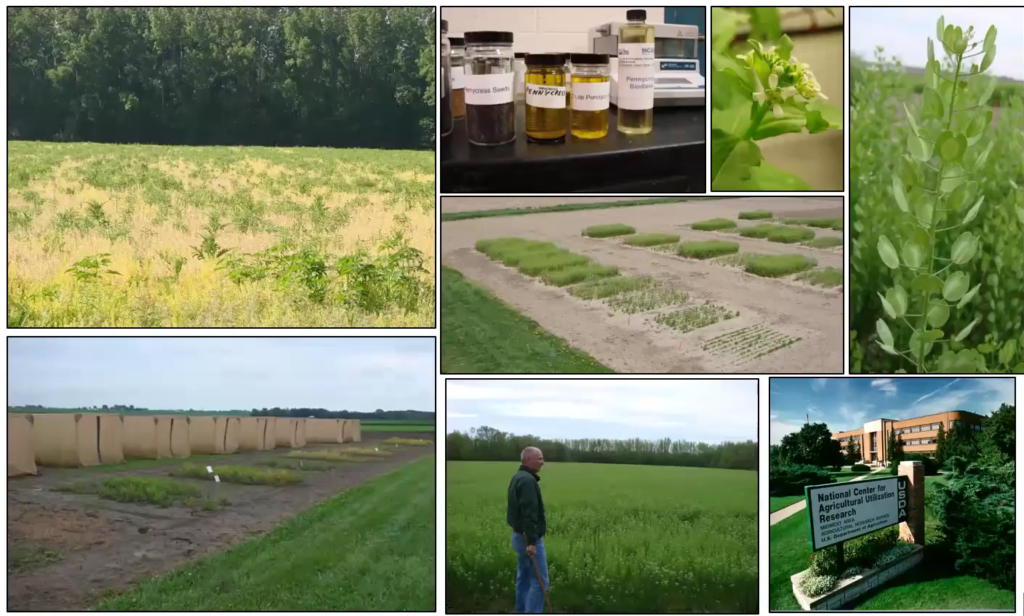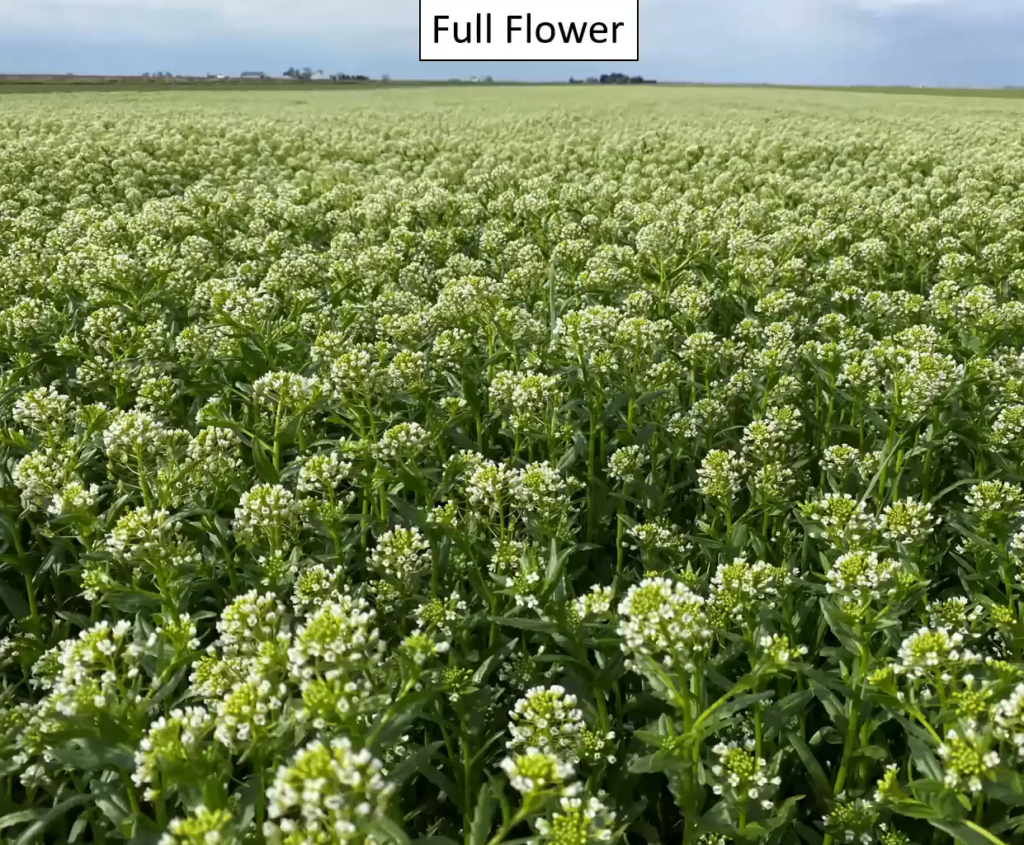The Illinois Cover Crop On-Farm Network (ICCON) continued their four-part winter series exploring new and emerging cover crops in December. ICCON was joined by Dr. Win Phippen, Professor of Plant Breeding and Genetics at Western Illinois University (WIU), who gave an overview of how the engineered CoverCress plant can be integrated into a corn – soybean system.
In 2019, researchers at WIU and other partners received a $10 million grant to commercialize pennycress, known as a common weed to many farmers, into a crop that could be grown in a corn-soy rotation and harvested for seed to be refined into aviation fuel. The Integrated Pennycress Research Enabling Farm & Energy Resilience (IPREFER) program is one of several projects around the country focusing on the production of energy crops in order to achieve the Sustainable Aviation Fuel (SAF) Grand Challenge.
The Challenge is to produce 10% of U.S. demand for aviation fuel (430 million gallons/year) by 2030 and 100% of the fuel demand by 2050. Illinois researchers identified pennycress as a potential crop that could help achieve this goal because of its ability to grow throughout temperate regions of the world, the plant’s extreme cold tolerance, and its relatively short life cycle which makes it perfect for fitting into a corn-soybean system. According to Dr. Phippen, if pennycress was grown on just half of the 80 million available cropland acres in the Midwest Corn Belt at 2,000 lbs seed/acre, over 3 billion gallons of oil could potentially be produced without displacing any food crops.

Photos show weed pressure from pennycress, research trials of CoverCress, and oil samples from various varieties.
Another reason researchers were interested in pennycress is its very small, diploid genome, which made gene editing and manipulation more accessible. Dr. Phippen emphasized that the black seeded wild pennycress is not the product that is being commercialized. Instead, companies who have been interested in the potential uses of pennycress have created a product called CoverCress by genetically editing pennycress using the CRISPR Cas9 technique. Researchers used this genetic editing method to “turn off” genes that the companies were not interested in retaining, including making changes to the genome that make the seed more palatable for livestock.
CoverCress Inc. (CCI), owned by Bunge, Chevron, and Bayer, is currently working with farmers in Central Illinois and Northeastern Missouri to grow CoverCress for whole grain production for poultry feed until the refinery industry can develop the necessary transportation, equipment, and processing systems needed to utilize CoverCress for aviation fuel. Once the correct systems are in place, CCI plans to expand their marketing to areas across the broader Midwest.

CoverCress in full bloom in mid-April.
During the call, Dr. Phippen shared several agronomic considerations for farmers who may be interested in incorporating CoverCress into their crop rotation. The CoverCress team begins working with farmers at least one year before any CoverCress seeds are actually planted in the field, ensuring that the herbicide program, field drainage, weed pressure, and other factors will allow for success when growing CoverCress.
Currently, CoverCress Inc. will provide farmers with CoverCress seed, technical assistance, and field evaluations from their team of agronomists. Depending on the vigor of a farmer’s CoverCress stand in March, the CCI team will decide whether a nitrogen application is warranted to maximize seed yield. If not, the farmer will skip fertilization and simply till it under as a standard cover crop. For fields that are selected to harvest for seed, the crop is typically ready to harvest in the last week of May, and farmers can expect to receive $75 – $90/acre for the grain yield.
Additional agronomic considerations of growing CoverCress are available on their website at www.CoverCress.com. To get in touch with Dr. Phippen or to learn more about his research, visit his WIU webpage. ICCON’s winter series focusing on new and emerging cover crops will continue next week on January 11th at 9am CT.
During January’s ICCON call, attendees will have a chance to hear from Joel Gruver, Associate Professor of Soil Science and Sustainable Ag at Western Illinois University. Dr Gruver will share his experience growing Camelina as a cover crop on WIU’s Allison Organic Research and Demonstration Farm. Dr. Gruver will share his insights on the effectiveness of camelina as a cover crop in an Illinois context. Register here to join.
If you are interested in joining the Illinois Cover Crop On-Farm Network to learn about new research and hear from cover crop specialists across the Midwest, you can register for our monthly calls or join our google group by sending an email to hvanbeck@farmland.org.